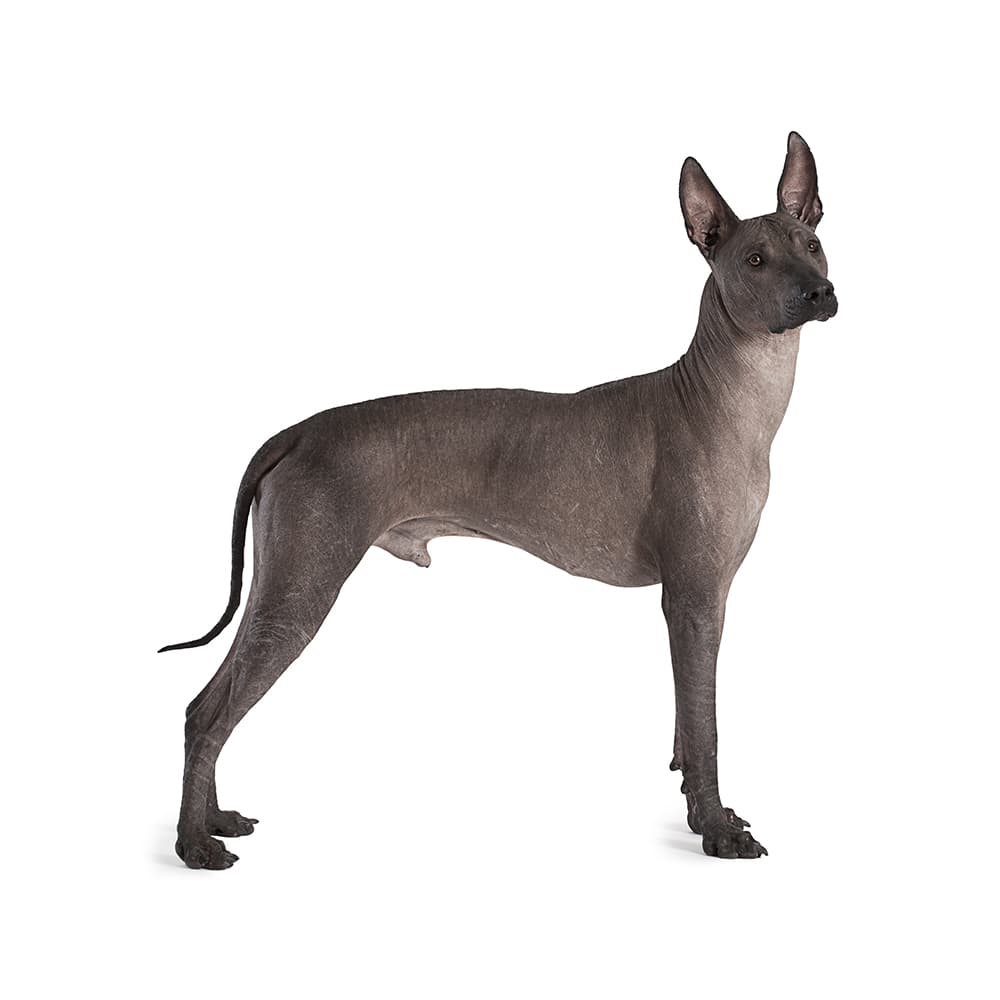Discover your dog's connection to this breed and 200+ others


Discover your dog's connection to this breed and 200+ others



The Xoloitzcuintli, often shortened to Xolo, has a rich and lengthy history. The breed is considered one of the world's oldest and rarest breeds, dating back over 3,000 years. This dog breed has been linked to the ancient Aztecs, Mayans, and Toltecs, and has appeared in pottery and artwork from these civilizations. The name Xoloitzcuintli is derived from the Aztec god Xolotl and the Aztec word for dog, itzcuintli. Believed to have healing properties and to safeguard the home from evil spirits, Xolos were highly regarded in ancient cultures. They were often buried with their owners to guide them in the afterlife. The breed nearly became extinct in the late 19th century but was revived through careful breeding programs in the 1950s.
Xoloitzcuintli Dogs are generally, with few health concerns. Since they are hairless, they must be protected from chemical, sun, and temperature damage. Skin care items formulated for sensitive skin are recommended. As for all breeds, genetic screening is recommended to assist veterinarians with diagnosis and proactive care, as well as help breeders identify affected and carrier dogs.
Xolos are known for being calm, tranquil dogs. They are intelligent and highly trainable, but they can also be independent and sometimes stubborn. Xolos are typically very affectionate with their family and can be good with children if properly socialized. However, they can be wary of strangers. They can also have a strong prey drive, so they might not be ideal for homes with small pets.
A canine genetic lineage is a group of individuals or entire breeds that descended from common ancestors predating modern breed formation. Often these lineages are associated with a ‘type’ of dog with a unique historical working role and associated behaviors (e.g., herding, scent hunting, etc.).
Breeds within the toy dog lineage were developed to be companion animals. They originated as lap dogs for royalty, nobility, and affluent individuals, and typically weigh less than 15 pounds. Breeds within the toy dog lineage were bred to be friendly and sociable, playful, and energetic while also having a heightened awareness of their environment.
Example breeds with ancestry from this lineage include Chihuahua, Maltese, and Shih Tzu.
The 3,000-year-old Xoloitzcuintli breed name is pronounced "show-low-eats-QUEENT-lee".
The Xolo comes in three sizes: Toy, Miniature, and Standard, and two varieties: Hairless and Coated. Hairless Xolos have tough, smooth skin, while coated Xolos have a short, flat coat.
Despite the hairless variety being the most known, Xolos can actually be hairless or coated. Hairless Xolos lack a full set of teeth, while coated Xolos have a complete set.
The Xolo's skin is prone to sunburn, so owners need to apply sunscreen to their dog's skin before going out in strong sunlight.
The breed has a significant role in Mexican culture and folklore, appearing in the Day of the Dead celebrations and believed to guide the deceased on their journey to the underworld.
https://www.petmd.com/dog/breeds/c_dg_xoloitzcuintli_xolo_dog
https://www.akc.org/dog-breeds/xoloitzcuintli/
https://www.ukcdogs.com/Xoloitzcuintli
https://www.fci.be/en/nomenclature/XOLOITZCUINTLE-234.html
Recommended by top vets with decades of experience
21 breeds
64 genetic health markers
50 genetic trait markers
